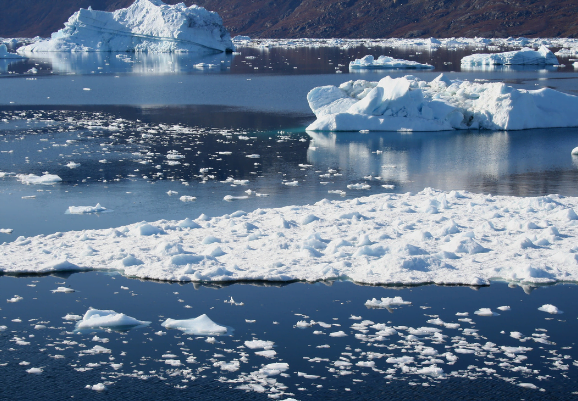An ocean current separates into 2 different currents at a small island that can be modelled as the origin. Current A heads due south and current B heads on a bearing of 100˚.
An oceanographer wants to measure the relative surface speeds of these two separate currents, by placing buoys in them off the island and measuring the distance travelled by the buoy in 20 hours.
After 20 hours, the buoy in current A has travelled 150km whilst the buoy in current B has travelled 250km.
a) Find the average speeds of the two ocean currents.
[2 marks]
b) Calculate the final distance between the buoys.
[2 marks]
c) Θ is the final bearing of the buoy in current B from the buoy in current A. Show that \(\frac{\sin\theta}{\sin{80}} = 0.93\) to 2 decimal places.
[3 marks]
d) Find the area of the triangle with the island and the two buoys as its
vertices.
[3 marks]




